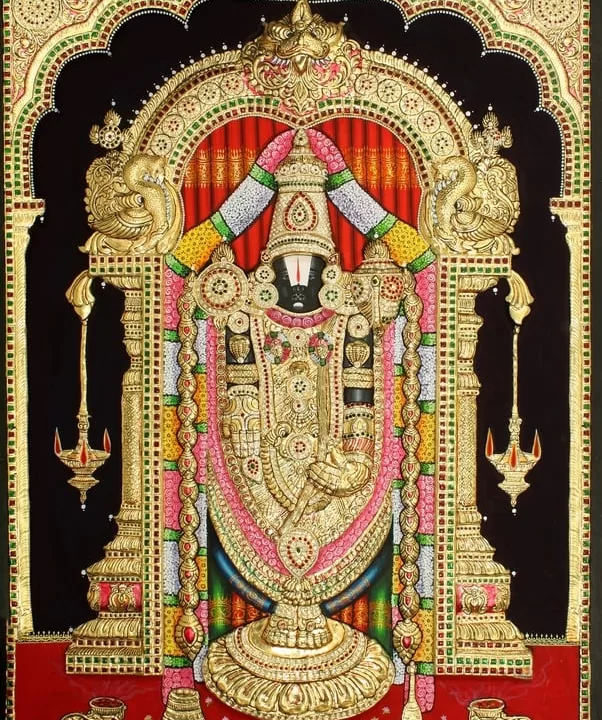Nestled along Tamil Nadu’s eastern coast, Thanjavur emerges as a cultural beacon, celebrated for its rich artistic heritage.
Situated gracefully on Tamil Nadu’s eastern shores, Thanjavur emerges as a beacon of cultural richness, revered for its profound artistic heritage. At the heart of this legacy lies the iconic Tanjore Painting, an art form that not only defines the city but also holds significant importance in the annals of Indian art history.

Tanjore paintings are a masterpiece in themselves, renowned for their distinctive use of gold leaf overlays, vibrant colors, and intricate portrayals of mythological themes, religious deities, and regal figures. This art form, rooted deeply in Thanjavur’s cultural soil, transcends geographical boundaries, earning global acclaim for its unique aesthetics and intricate detailing.
The prominence of Tanjore paintings isn’t merely a local phenomenon; it resonates profoundly in the chronicles of Indian art history. These paintings, with their lavish embellishments and mythical themes, trace their origins back to the 16th century Nayak rulers of Thanjavur. Their patronage and encouragement led to the flourishing of this art form, creating a rich legacy that continues to captivate art enthusiasts worldwide.
The ornate use of gold leaf in Tanjore paintings serves more than an aesthetic purpose. It signifies divinity and radiates an ethereal aura, elevating the artwork to a realm beyond just visual appeal. It’s a testament to the cultural and spiritual significance attached to these creations, reflecting the ethos of a bygone era while retaining relevance in contemporary artistic expressions.
However, Thanjavur’s artistic brilliance isn’t confined solely to Tanjore paintings. The city proudly boasts the awe-inspiring UNESCO World Heritage Site, the Great Living Chola Temples. Among them, the Brihadeeswarar Temple stands tall as a testament to architectural grandeur and Dravidian excellence. Its imposing vimana, intricate carvings, and revered statues narrate tales of cultural richness and artistic prowess, underscoring the historical significance of Thanjavur in preserving India’s architectural heritage.
Yet, Thanjavur’s cultural tapestry extends beyond the architectural marvels. It resonates as a birthplace and nurturing ground for two quintessential Indian art forms: Carnatic music and Bharatnatyam dance. This city breathes music, nurturing legendary musicians like Tragaraja and evolving as a bastion for Bharatnatyam, a dance form steeped in tradition and grace. Its soil has cultivated numerous eminent dancers and teachers, contributing significantly to the preservation and evolution of this classical dance form.
The importance of Tanjore paintings in Indian art history isn’t merely in their aesthetic allure but also in their role as cultural artifacts that encapsulate the socio-religious fabric of a bygone era. They provide a visual narrative, offering insights into the traditions, beliefs, and artistic sensibilities prevalent during their creation.
Thanjavur, with its artistry flourishing across paintings, architecture, music, and dance, stands as a living museum—an embodiment of tangible heritage and intangible artistic spirit. It serves as a testament to India’s rich cultural heritage, inviting visitors to immerse themselves in an artistic legacy that continues to inspire and captivate. Thanjavur, indeed, remains an exquisite jewel in the crown of Indian art history, with Tanjore paintings as its shimmering centerpiece.

